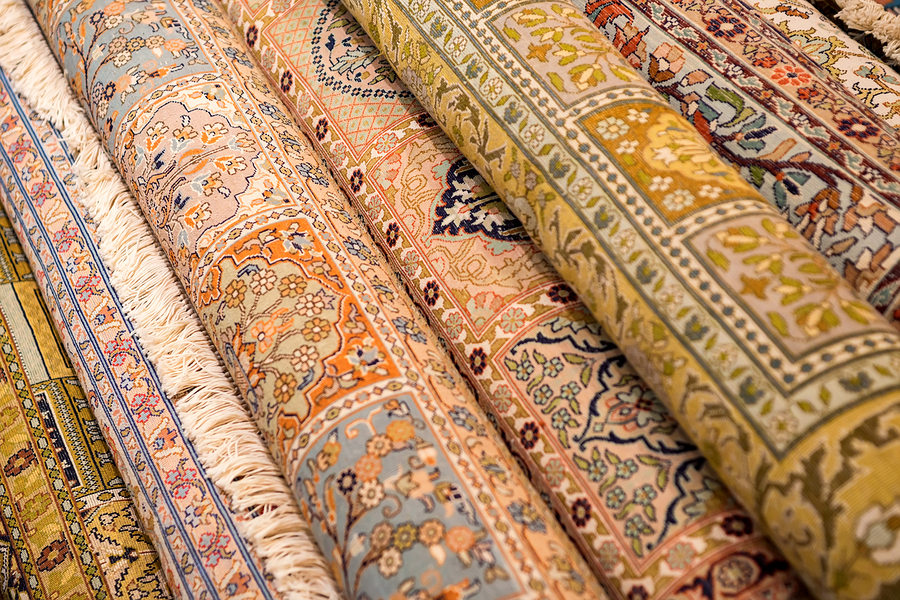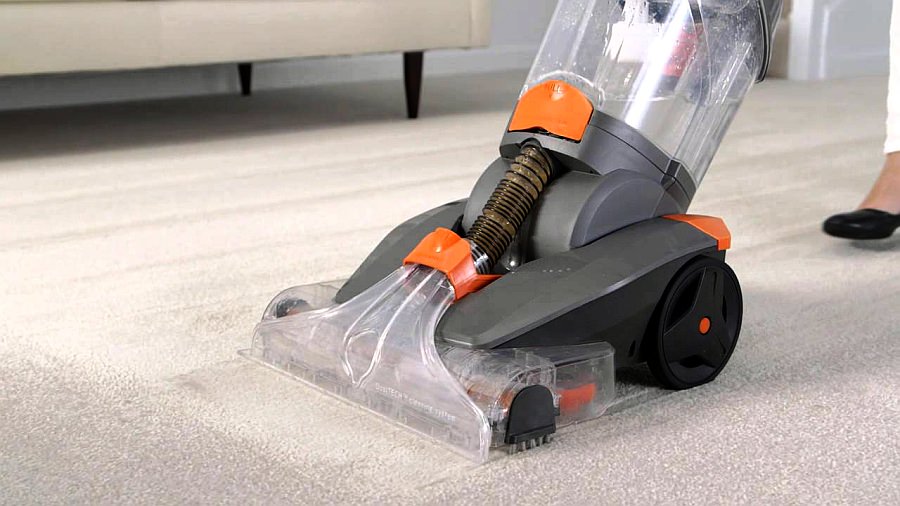Carpet Cleaning Consumer Guide
The carpet cleaning industry is one of the few industries that is not regulated, and also has a very low barrier to entry in that anyone can call themselves a “professional” without any basis for that claim. Yet these are people who come into your home and use cleaning chemicals which can be dangerous if you do not have the knowledge of how to use them properly, and more importantly do not have the right equipment (not a rented shampooer) to remove them properly.
Everyone has heard nightmare stories about crimes committed, about overuse or improper use of chemicals, and exposès on Bait-and-Switch companies who use a low coupon offers to get their foot in the door and hard sell unsuspecting consumers into a bill they are compelled to pay. When you open the phone book you really can’t tell who the great cleaners are, or the ones you would never EVER want to use. The “great” cleaners work hard to distinguish themselves apart from the fly-by-night companies who use unsafe cleaning practices, hard-sell tactics, and sometimes have very unsavory employees.
Your carpet and rugs act as a “filter” in your home for your indoor air. Their fibers “grab” particulates and contaminants and hold them. But like any filter, it needs to be cleaned because when it gets full it cannot grab anything else … and every time you step on a “full” filter you release contaminants back into the air.
Cleaning your carpet is key to a healthy indoor environment, and the EPA’s guidelines for cleaning vary from every four months to every eighteen depending on the number of people and pets in the home, as well as other concerns from allergic sensitivities to how dusty the air is in your neighborhood to whether anyone in the home smokes. A true carpet cleaning professional can evaluate your particular needs, and with the right equipment and cleaning solutions, can fulfill those needs for you and your family.
The question now is how to find that “right” professional … and we have the information to help you do just that.
The following is a summary on how to choose the right professional carpet cleaner. It covers some of the common mistakes made by consumers in choosing a carpet cleaner, and also the four steps you can take to help you in choosing a true “professional.”

How to deep clean a rug: our guide for a cleaner, healthier rug
In most houses, carpets tend to be made of tougher material. It’s a pragmatic choice – your carpets will have to put up with plenty of abuse on the daily. Rugs on the other hand tend to be more ornamental. Most use them to highlight specific rooms or to fit a certain style.
As such, there’s much more variation in terms of material and durability. Consequently, deep cleaning a rug is different from cleaning your carpet. It often involves completely different techniques and tools.
Start with a quick vacuum
Vacuuming is step one of deep cleaning a rug. While it mightn’t rid your rug of deep stains and messes, it removes surface-level dirt and debris, making the rest of the job significantly easier.
Here are a couple pointers when it comes to vacuuming a rug:
Start gently using a lower setting
Make sure your rug is completely dry
Don’t forget to vacuum both sides
Zero in on discoloured areas
Check the label
Like we mentioned before, rugs tend to be ornamental in nature. That means materials too delicate for carpet use often find their way into rugs. These materials often require special treatment. If you don’t know where to start, be sure to check for any special instruction on the tag
Features to Look for When Buying a Carpet Cleaner
If you are in the process of buying a new carpet cleaner, there are certain things you need to bear in mind. Aside from the price, you have to take various factors into account. Discussed below are the top features you need to look for in an ideal carpet cleaner. Use them as a guide when you make your choice.
Some people may confuse a carpet cleaner with a vacuum cleaner, however, there is a big difference between the two. Before we delve into the discussion of making a perfect choice, let’s try to figure out the basic difference between a vacuum cleaner and carpet cleaner.
Vacuum cleaner vs carpet cleaner
As already said, for many, a carpet cleaner is equated to a vacuum cleaner. Certainly, it is not the case. A vacuum cleaner just sucks up dirt and other solid particles from carpet but carpet cleaners are meant for deep cleaning that includes a long process of washing, rinsing, scrubbing, and thoroughly cleaning up with liquid carpet cleaning agents.
No water or cleaning agent is used in case of a vacuum cleaner. This type of cleaning involves dry cleaning to make the carpet look fresh and clean. Small (compatible) attachments that come bundled with the pack offer flexibility to clean narrow areas, corners, stairs and areas between cushions and mattresses.
On the other hand, carpet cleaners use water to steam clean the carpet using a liquid cleaning solution/shampoo. The cleaner brushes spin at a high speed to isolate the rug fibers and loosen dirt. Water and cleaning agent are extracted into a wastewater container, resulting in deep cleaning. The machine removes the cleaning shampoo and dries the carpet surface in real-time.

Consumer Awareness Guide to Carpet Cleaning
Choosing the right carpet cleaning method, and the right company can be confusing. In this guide, we will share with you six costly misconceptions about carpet cleaning. We will also offer 4 recommendations. We will also provide ten questions that you should ask a carpet cleaner before you invite him into your home.
You should wait as long as possible before cleaning your carpet.
No. Dirt is an abrasive – like sandpaper. Every time you step on the carpet, you grind dirt into your carpet fibers. This cuts your carpet, just as if you had used a knife, causing it to wear out faster. A soiled carpet will not last nearly as long as a clean carpet. And while vacuuming helps – by itself, it’s simply not enough. The longer you wait to have your carpet cleaned, the more damage you do to your carpet and the faster it wears out.
The only reason to clean carpets is to get the dirt and spots out.
No. As you probably know, outdoor air contains pollens, fungus, bacteria, air pollution, cigarette smoke, car exhaust – and hundreds of other harmful chemicals. When you and your family members enter your home, you carry those pollens and chemicals in your hair and on your skin, clothing, and shoes. Not surprisingly, all those chemicals, pollens and bacteria end up – you guessed it – in your carpet. .
If you have allergies, asthma, emphysema, or other breathing problems – one major source of your problem could be the pollutants and contaminants in your carpet. Carpet is a wonderful air filter, and prevents many of these pollutants from becoming airborne again and inhaled, as would occur on a hard surface. However, like any filter, your carpet needs to be cleaned out periodically.
Tobacco smoke contains over 4000 separate chemical compounds, 43 of which cause cancer. Even if you don’t smoke, those chemicals get on your shoes; you track them in to your home and deposit them in your carpet. If you’re sensitive to cigarette smoke, you’ll find that you’ll breathe easier after you hire a company to properly remove those harmful chemicals from your carpet. So in addition to getting rid of dirt and spots, another important reason to clean your carpet is to flush out the pollens, fungus, bacteria, fertilizer, and chemicals and tars related to tobacco smoke.
Carpet cleaning & Maintenance guide
Implementation of an adequate cleaning and maintenance regime from the time of installation of your commercial carpeting, makes it is possible to safeguard your carpet’s appearance, enhance the image of your installation and ensure continued high performance throughout its life cycle.
Installation of barrier matting
As 80% of carpet soilage is footborne, positioning adequate barrier matting at main entrance points is vital – ideally 4 metres deep into the building, to function at maximum efficiency. has a range of suitable products including the Barriertex Entrance Matting System which combines shoe scraper and absorbent strips to form an effective defence against the ingress of dirt, grit and moisture into your facility. sorbent strips to form an effective defence against the ingress of dirt, grit and moisture into your facility.
Secondary matting is also effective at crisis points – in lifts, where hard surfaces meet carpet, by vending machines etc.
Matting must be vacuumed regularly and cleaned periodically or it will act as a source of soiling to adjacent areas.
Regular carpet maintenance
As carpet has the ability to conceal soilage it can appear to be clean when it is not, however, this should not result in delayed cleaning and maintenance, because when it appears dirty it can be hiding very high levels of soilage.
A Programme of Regular Carpet Maintenance should include the following elements:
Effective Vacuuming – A vital element in any Cleaning & Maintenance Regime to reduce fibre abrasion & wear. High usage areas should be vacuumed daily to prevent the unsightly build up of dry soilage – dirt ,dust and grit. Use of an upright twin motor vacuum cleaner agitates pile, removes dry soilage & enhances carpet appearance. Tub Vacuums are not as effective, unless fitted with a turbo brush attachment to agitate the fibres and loosen soiling.
Regular Spot Removal – Spots and spills usually form 5-10% of soiling, with beverages & food spills the most common. Failure to remove unsightly marks on a regular basis increases the chance of permanent staining & leads to a decline in appearance, For quick and easy spot removal use a specialised kit e.g. Host Spotting Kit or Spotzapper Kit. See also our Simple Spot & Spill Remover Guide below.
Periodic Cleaning – The required frequency for appearance retention will depend on carpet colour, type of installation and traffic flow. To allow carpet to soil excessively before cleaning can lead to premature replacement. A Carpet Maintenance Programme can be tailored to your premises and budget.
Dry Extraction Carpet Cleaning is a very effective method of deep cleaning. A cleaning compound containing absorbent particles and emulsifiers e.g. HOST, is brushed into the pile where it absorbs the soilage and is then extracted. The process minimizes disruption as it requires no drying time and enables carpets to return to use immediately. Enables carpets to be cleaned as often as required without damage or rapid resoiling.